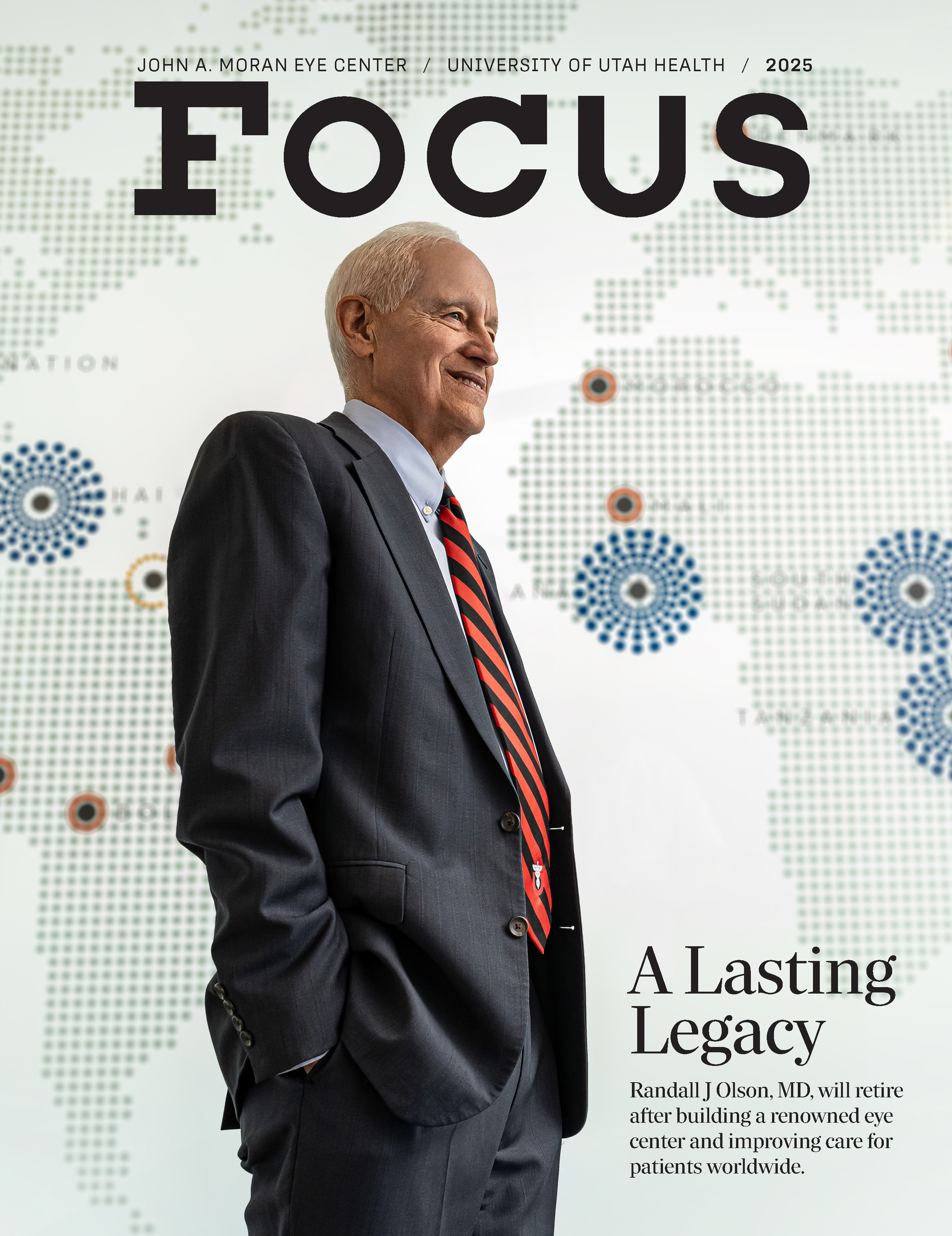

Moran has added research faculty members who use advanced methods to explore promising areas of investigation.
Technological advances are giving vision scientists unprecedented opportunities for discovery: think artificial intelligence (AI), 3-D diagnostic imaging, and high-tech medical devices implanted into the eye, to name a few.
John A. Moran Eye Center Vice Chair for Clinical and Basic Science Research Paul S. Bernstein, MD, PhD—who recently collaborated on a retinal eye surgery robot prototype—explains that it is an exciting time for both the field and Moran.
“Moran is known for its unique research resources and has achieved many ‘firsts’ in the field, particularly in retinal research. Now, we are expanding and making substantial investments in research areas that will take us into the future. That means investing in the latest tools for our scientists and recruiting experts in developing areas that will advance new initiatives.”
Meet the New Faculty Members
Six scientists joined Moran in 2024, and their skills strengthen the program in key areas, including AI, disease modeling, surgical devices, and neuroscience.
- Neuroscientist Zachary W. Davis, PhD, joined Moran from the Salk Institute for Biological Studies Research and investigates how the brain processes information collected by the eye to generate vision. This understanding is fundamental to developing new therapies for neurogenerative diseases, such as glaucoma or Alzheimer’s disease. His lab is focused on developing new models of visual function in the brain and creating new technologies to better measure and manipulate neural activity.
- Innovator, educator, and entrepreneur Adam M. Dubis, PhD, joined Moran from University College of London and is a top name at the intersection of AI and ophthalmology. Dubis has commercialized several analytical tools while focusing on developing safer, more robust AI models to support improved ophthalmic care and to better understand disease progression. In his laboratory, Dubis is applying deep learning techniques to retinal image and data analysis. He consults worldwide on data use strategy, the evolution of digital policy, and health technology regulations.
- Clinician-scientist Ian F. Pitha, MD, PhD, is a glaucoma specialist trained in pharmacology, models of glaucoma, and biomaterials. He joined Moran from Johns Hopkins University and studies the role of scleral cells, or the white of the eye, in the disease. Pitha is working to develop extended-release medications for glaucoma patients, who must often use multiple prescription eye drops several times a day. He also is studying new materials for microscopic implants used to regulate pressure inside the eye.
- Suva Roy, PhD, is a retinal researcher who joined Moran from Duke University. He studies how different types of cells in the retina act in concert within specialized circuits to support vision. Roy is developing new electrophysiological, imaging, viral, and computational approaches to study these cells in normal and diseased conditions induced by glaucoma. He is also leading a National Institutes of Health-funded study to establish a new model for retinal research. His work aims to identify promising targets for new drug and gene therapies.
Two internal University of Utah scientists joined the Moran faculty from other departments, strengthening collaborations and existing lines of research.
- Weiquan “Wendy” Zhu, PhD, studies the mechanisms involved in abnormal new blood vessel growth and instability in diseases driven by aging and inflammation. In the eye, this includes age-related macular degeneration; elsewhere in the body, it includes diseases such as multiple sclerosis and Alzheimer’s. Zhu has identified proteins that contribute to inflammation in the brain and spinal cord and to diabetic retinopathy, which occurs when blood vessels at the back of the eye leak fluid. Her work could also identify promising targets for new drug and gene therapies.
- Caroline M. Garrett, DVM, has over a decade of experience supporting translational preclinical research investigations. She collaborates with several researchers at Moran to support studies focused on understanding the anatomical organization and function of neural circuits in the visual cortex. Her expertise includes advanced imaging, neuroanatomical mapping, neurophysiology, and models of ocular disease, including glaucoma. At the University of Utah, Garrett also serves as Senior Clinical Veterinarian in the Office of Comparative Medicine.
